Eling Tide Mill, Eling
A water-powered corn mill in the historic county of Hampshire, England.
See related images and documents.
See images only.
This mill is a Heritage Partner. These organisations support our cause and share in our success. In return they receive a range of benefits, including publicity such as our featured mill pages. Find out more about the scheme...
Eling is one of only 8 tide mills (only two of which are working) that survive around the coast of the UK. They work with the rise and fall of the tides. A dam is created with a sluice across a tidal inlet; the tide comes in and enters the mill pond through a one way gate which closes automatically when the tide begins to fall. When the tide is low enough, the stored water can be released to turn a water wheel.
Grain for Eling in the old days would have been brought several hundred miles round the coast in barges from the Eastern side of England. When the tide was in, the barges could be sailed up Southampton Water, into Eling Creek, and right up to the Mill. Maximum possible output, running both waterwheels and all four sets of stones at full speed for both tides, would have been about 4 tonnes of flour per day.
The mill has always had two undershot waterwheels each one capable of running two pairs of millstones. The waterwheels originally were wooden, replaced in 1892 by cast iron ones along with the wheel shafts and gears.
The Grade II* Listed mill worked until the machinery broke down in 1936, after which the mill ran by diesel engine running the animal feed machinery. The mill was abandoned in 1946 and left to the elements until 1975 when it was bought by the New Forest District Council. They took on the job of repairing the mill which was in danger of collapsing. In 1980 The Eling Tide Mill Trust was responsible for overseeing the final stages of the repair and the re opening of the mill and museum. Since January 2009 Totton and Eling Town Council manage the mill.
Today the tide mill, surrounding riverside walks and adjacent visitor centre and cafe form The Eling Tide Mill Experience.
A partnership of New Forest District Council (NFDC) and Totton and Eling Town Council invested in its future after securing a grant from the Heritage Lottery Fund, which included work on all four parts of The Eling Tide Mill Experience. This included essential conservation works of the mill, extending and developing the visitor centre to create a new learning centre and café, and improving access to our outdoor areas of Goatee Beach and Bartley Water. The works were completed allowing the Eling Tide Mill Experience to reopen on 9th April 2018.
Visitors can now enjoy the mill and watch the power of the tide turning our machinery; explore the Discovery Room and get hands on with interactive displays and learn about the history of the mill; stroll along the fully accessible board walks and pathways; and enjoy our mill café and sample some products made with our flour.
Full details
| Power source | Water |
| Mill type | Tide mill |
| River | Bartley Water |
| Mill function | Corn mill |
| Archive ID | 6665 |
| Location | Eling, Totton and Eling |
| Historic county | Hampshire |
| Country | England, United Kingdom |
| NGR | SU 36502 12520 |
| Latitude/longitude | 50.91113600, -1.48233300 |
Location
Gallery
-
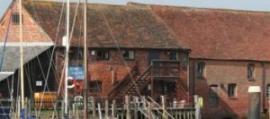 External photograph of Eling Tide Mill as it stands today. Image courtesy of Totton and Eling Town Council.
External photograph of Eling Tide Mill as it stands today. Image courtesy of Totton and Eling Town Council.
-
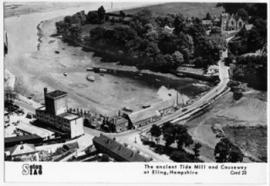 An aerial view of the mill and causeway - date not known. From the Don Paterson Collection.
An aerial view of the mill and causeway - date not known. From the Don Paterson Collection.
-
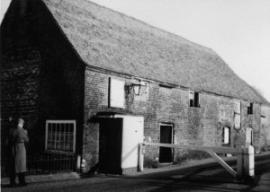 A downstream view of Eling Tide Mill with figure. Date not known.
A downstream view of Eling Tide Mill with figure. Date not known.
-
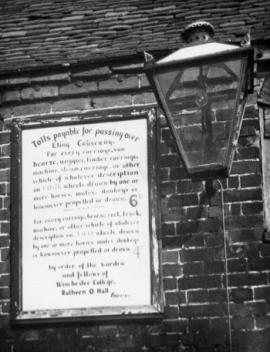 The bill of tolls at the tollgate. Image taken in 1965.
The bill of tolls at the tollgate. Image taken in 1965.
-
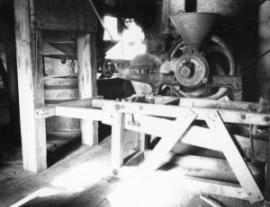 Internal image of the Kibbler, with remains of a corn cleaner in the front. Image from 1966.
Internal image of the Kibbler, with remains of a corn cleaner in the front. Image from 1966.
-
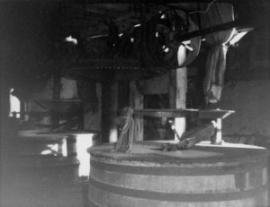 A 1965 image of two pairs of newer millstones, the crown wheel and line shafting.
A 1965 image of two pairs of newer millstones, the crown wheel and line shafting.
-

References
- Anthony Bryan, Mills Research Group Database
- Historic England National Heritage List for England
- Ordnance Survey 25-inch map, Hampshire and Isle of Wight LXIV.8 (1897)
Contributors
The Eling Tide Mill Experience
Related shop products
- Guide to the industrial archaeology of Hampshire and the Isle of Wight
- MRG Proceedings, Conference 1
- Open to tide mills
- Stone ground flour by natural power
- Tide mill at Eling
- Tide mills of Hampshire and the Isle of Wight
Related publications in the library
- Eling tide mill information book
- Guide to the industrial archaeology of Hampshire and the Isle of Wight
- Old tide mill at Eling
- Old tide mill at Eling
- Open to tide mills
- Stone ground flour by natural power
- Tide mill at Eling
- Tide mills of Hampshire and the Isle of Wight
- Tide mills part 1
- Tidemills of Western Europe
Missing information? Click here to tell us about this mill.


